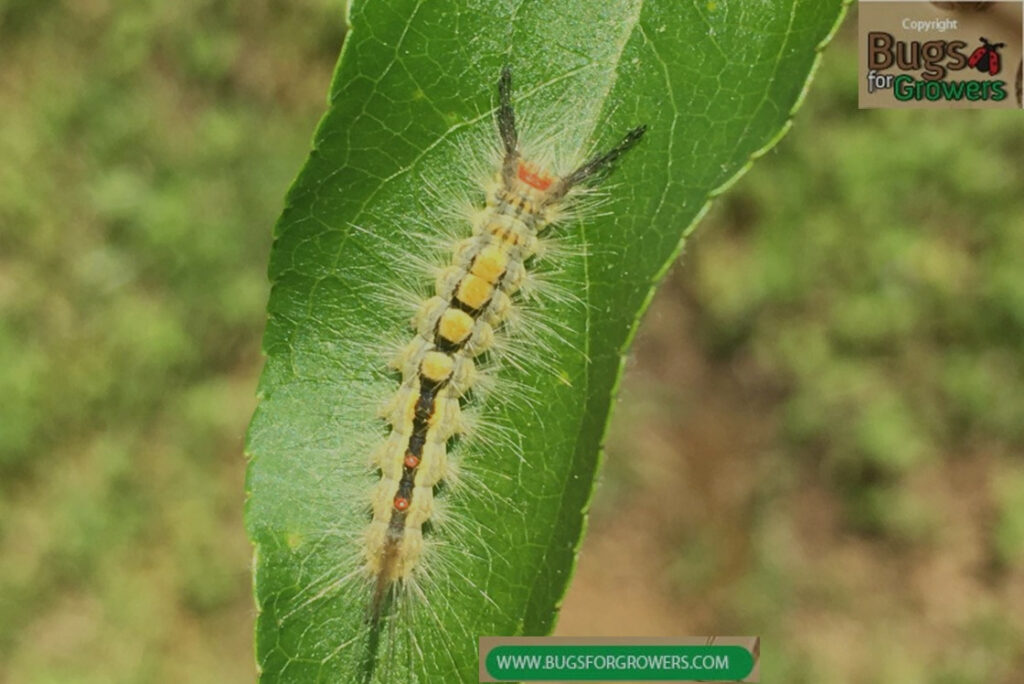What are white-marked tussock moths?
White-marked tussock moths (Orgyia leucostigma) are grayish in color and their larvae are about 1.5 inch long, conspicuous in color with red heads, three- yellow or cream colored tufts of hairs and blackish to yellowish stripes on the dorsal side. Sub-dorsal sides of larvae are grayish in color (Photo 1). Pupae are yellowish in color with patches of setae. These moths overwinter as eggs that hatch in late May and start feeding on the leaves of host plants until they become mature and ready for pupation.

Hosts:
Although white-marked tussock moth larvae can feed on over 100 plant species, they are considered as one of the important pests of many economically important fruit and nut crops including walnuts, apple, cherries and blueberries.
Damage:
Although tussock moths are considered minor pests, their outbreaks can be devastating. After hatching from eggs, young larvae start feeding by scraping the leaf tissue between the veins giving a window appearance. As the larvae become mature, they can feed voraciously on leaves and completely skeletonize them entirely. Heavy infestation of mature larvae can cause complete defoliation of their host plants that in turn can cause yield loss. The contact with hairs of larvae can cause itching and erythema in humans for a couple of days.
What are natural enemies of tussock moths?
Larvae of tussock moths have many natural enemies including pathogens, and parasitic and predatory insects. Pathogens including viruses such as Baculovirus and Cypovirus can infect and kill larvae of tussock moths.
Parasitoids like Apanteles porthetriae (Muesebeck) and Rogas lymantriae (Watanabe) can parasitize and kill larvae of white- marked tussock moths.
Predatory insects like Polistes paper wasps (Photo 2) can attack and kill larvae of white-marked tussock moths.
Control of tussock moths with organic pesticides
A plant based organic pesticide called Molt-X® – containing Azadirachtin, a compound isolated from neem leaves and can be sprayed to control larvae of tussock moths and other insect pests.
Molt- X is an OMRI listed emulsifiable concentrate formulation, which works as an insect growth regulator that disrupts the molting process in insects. When immature stages of insects are exposed to Molt-X®, they become sick, stop feeding and cannot develop into the next stage/instar because of disrupted molting. Also, mature insects when exposed to Molt-X cannot reproduce normally.
What is the optimum rate of Molt-X to control Tussock moth?
The optimum concentration of Molt-X® in spay solution for the effective control of different pests is 8-10 ounces per 100 gallons of water.
- For insect pest control, apply 8-10 ounces of Molt-X® /acre of vegetables or ornamentals.
- For plant-parasitic nematode control, apply15 ounces of Molt-X® /acre of vegetables or ornamentals.

